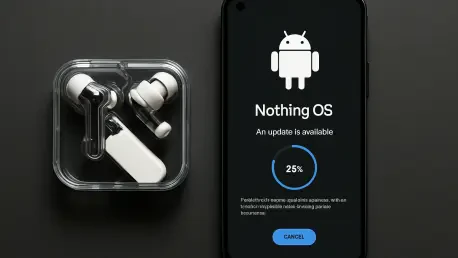Diving into the world of cutting-edge mobile technology, we’re thrilled to chat with Oscar Vail, a renowned expert in tech innovation with a sharp focus on quantum computing, robotics, and open-source projects. With a finger on the pulse of the latest advancements, Oscar brings unparalleled insight into the recent rollout of Nothing OS 4.0 based on Android 16 for the Nothing Phone (3). In this conversation, we explore the standout features of this update, the unique capabilities it brings to the device, and what it means for the future of smartphone experiences. From enhanced user interfaces to innovative visual and tactile feedback, Oscar unpacks the details that make this release a game-changer.
What excites you most about Nothing OS 4.0 as the latest update for the Nothing Phone (3)?
I’m really impressed with how Nothing OS 4.0 leverages Android 16 to push boundaries. It’s not just an incremental update; it feels like a reimagining of the user experience. The integration of real-time updates on the lock screen and Glyph Interface is a standout, making information accessible without even unlocking the device. Plus, the focus on smoother animations and tactile feedback shows a deep commitment to making every interaction feel premium. It’s clear they’ve listened to users and refined the system to be more intuitive and engaging.
How does building on Android 16 elevate the experience compared to previous versions of Nothing OS?
Android 16 brings a lot to the table, especially in terms of app compatibility and system efficiency. For Nothing OS 4.0, this means better support for features like Live Updates across a wider range of apps through the Glyph Progress feature. It also optimizes power usage and enhances security protocols under the hood. Compared to earlier versions, there’s a noticeable improvement in how fluid and responsive the system feels—swipes, transitions, and gestures all have a polished edge that makes the phone feel faster and more connected to the user.
Why do you think the Nothing Phone (3) was prioritized for this update over other devices in the lineup?
It makes sense that the Nothing Phone (3) is the flagship for this rollout. It’s likely their most advanced hardware to date, designed to fully showcase what Nothing OS 4.0 can do. Features like the deeper Flip to Glyph controls and new Glyph Toys are tailored to its unique design elements, so rolling it out here first allows the company to highlight the synergy between hardware and software. It also builds excitement among users of this device, reinforcing its position as the brand’s cutting-edge offering.
Can you shed some light on the new Flip to Glyph controls and what inspired this feature for the Nothing Phone (3)?
The Flip to Glyph controls are a creative evolution of how users interact with the phone’s signature light-based interface. The idea seems to be about giving users more customization over notifications and alerts through physical gestures like flipping the device. It’s inspired by the need for quick, glanceable information without always engaging with the screen. This kind of innovation taps into making tech feel more personal and interactive, turning a simple action into a meaningful way to stay updated.
How do the Live Updates on the lock screen and Glyph Interface change the way users interact with their phone?
Live Updates are a game-changer for convenience. They deliver real-time info—like ride status or delivery tracking—right to the lock screen or through the Glyph Interface’s light patterns. This means you don’t have to unlock your phone or open an app to stay in the loop. It’s all about reducing friction; you get a quick visual or light cue and know exactly what’s happening. It transforms the phone into a more proactive companion, keeping you informed with minimal effort.
What’s your take on the Extra Dark Mode and how it impacts both aesthetics and functionality?
Extra Dark Mode is a fantastic addition, especially for anyone who uses their phone in low-light conditions. Aesthetically, it deepens blacks and boosts contrast, giving the interface a sleek, modern vibe that’s easy on the eyes. Functionally, it cuts down on power consumption, which is always a win for battery life. It’s currently focused on first-party apps, but the calming effect it has on notifications and quick settings already makes the phone feel more focused and less distracting at night.
Can you explain how the improvements to touch and gesture responses make the system feel more intuitive?
The team behind Nothing OS 4.0 has really dialed in on making interactions feel natural. Every touch, swipe, and gesture now has a subtle depth to it, thanks to refined animations and haptic feedback. For instance, when you hit volume limits, there’s a small vibration that lets you know you’ve maxed out, even if you’re not looking at the screen. App transitions also feel alive with background scaling effects that create a sense of connection. These small tweaks add up to a system that responds like an extension of your instincts.
What’s your forecast for the future of operating systems like Nothing OS as they continue to evolve with Android updates?
I think we’re heading toward even deeper personalization and integration with everyday life. Operating systems like Nothing OS will likely keep pushing the envelope on how hardware and software blend—think more advanced Glyph-like features or interfaces that adapt dynamically to user habits. With Android updates providing broader app support and efficiency, I foresee a future where smartphones become less about manual input and more about anticipating needs through AI and real-time data. It’s an exciting space to watch, as brands like Nothing carve out their niche with bold, user-centric designs.









